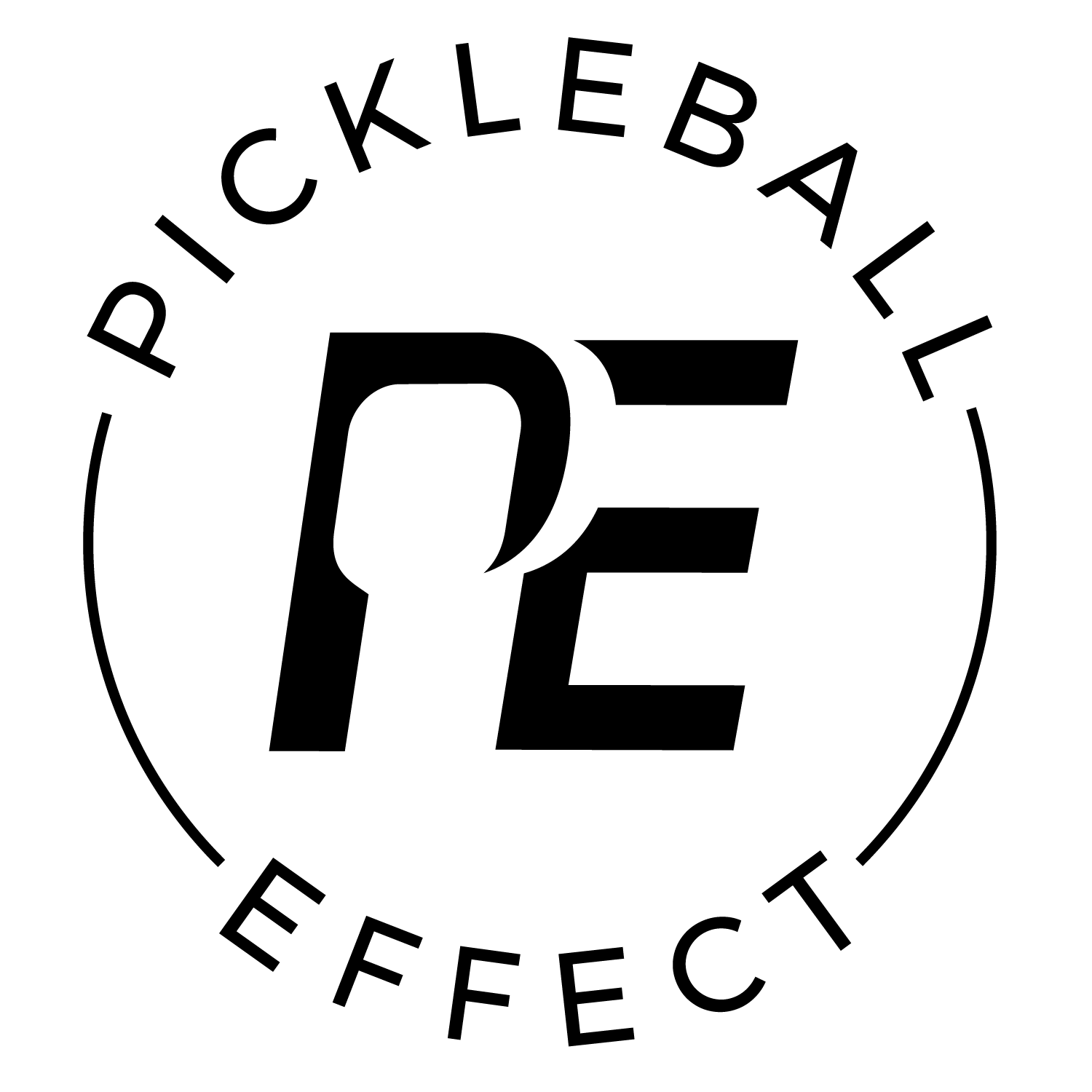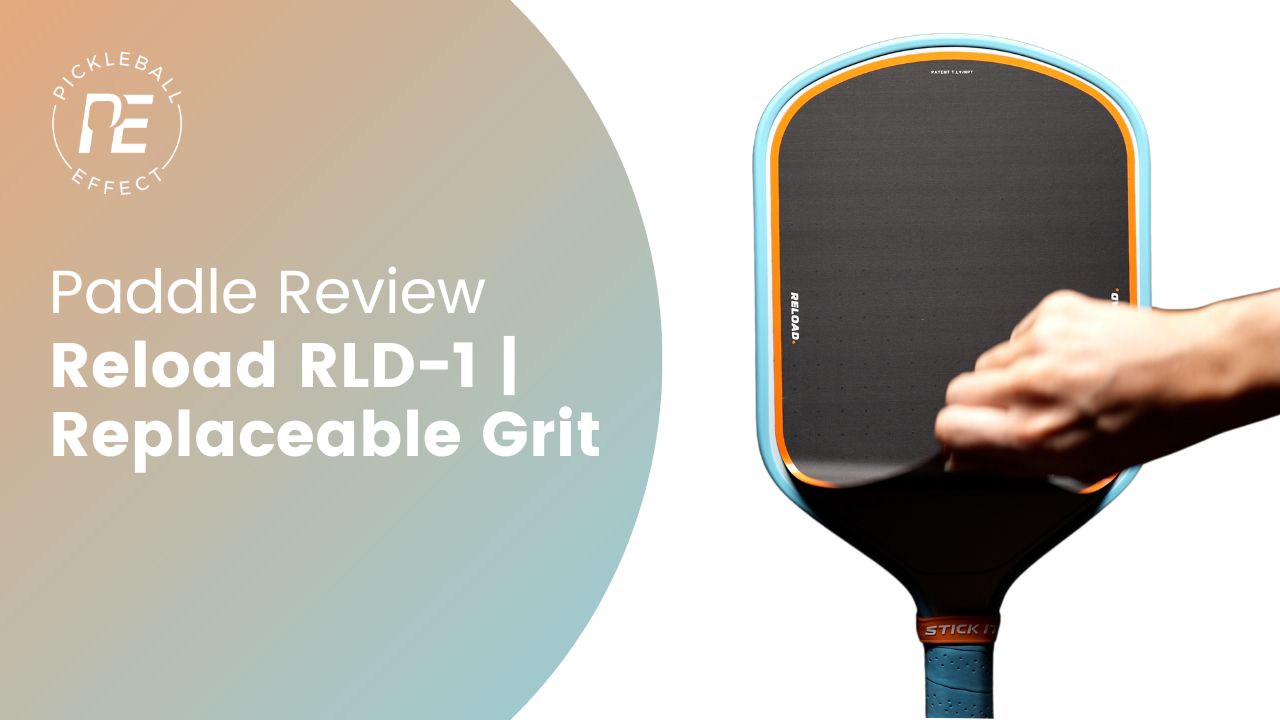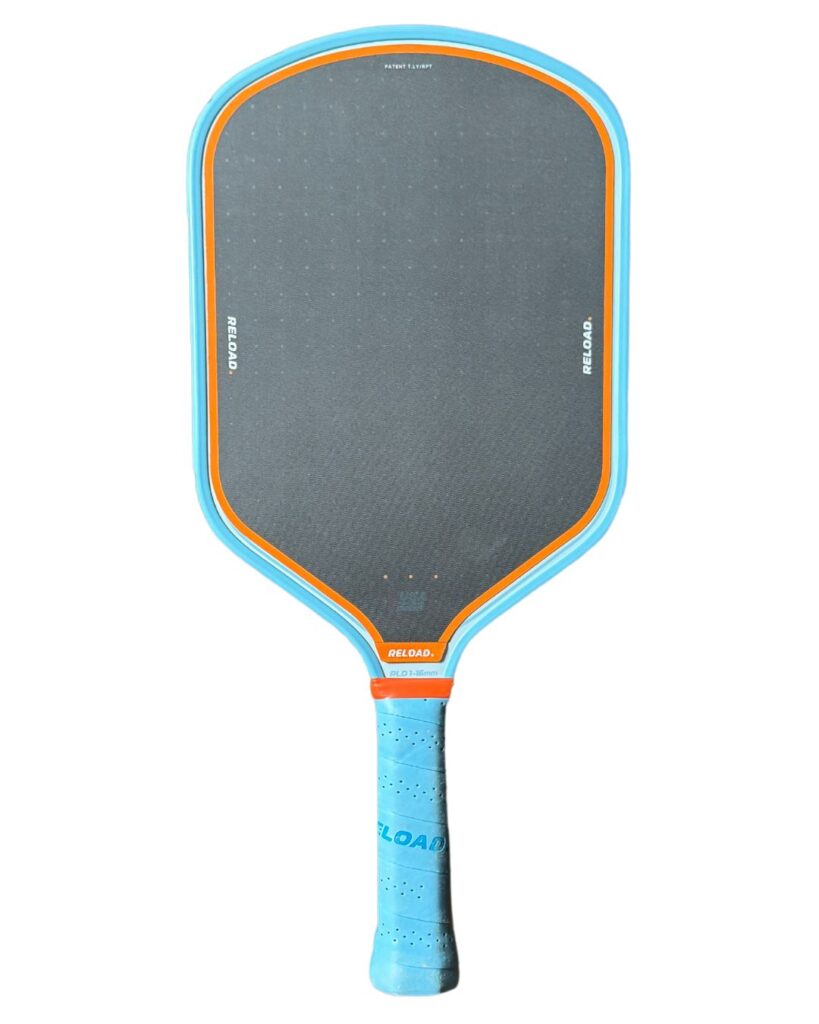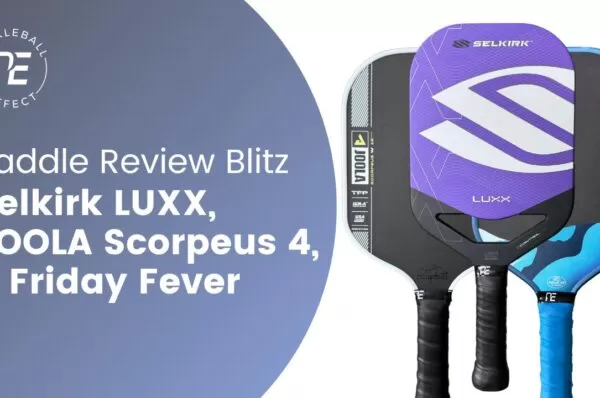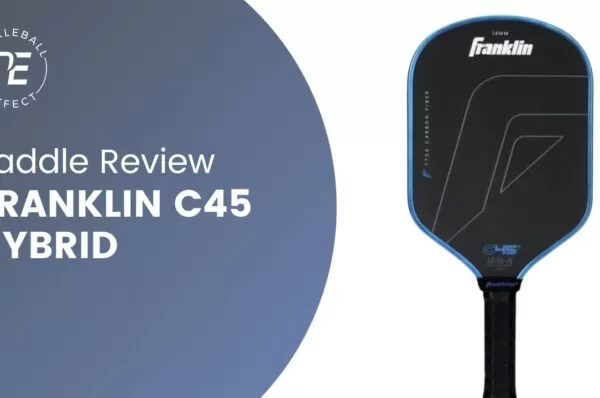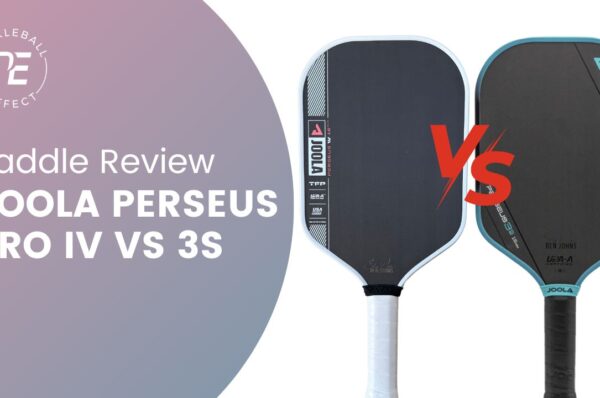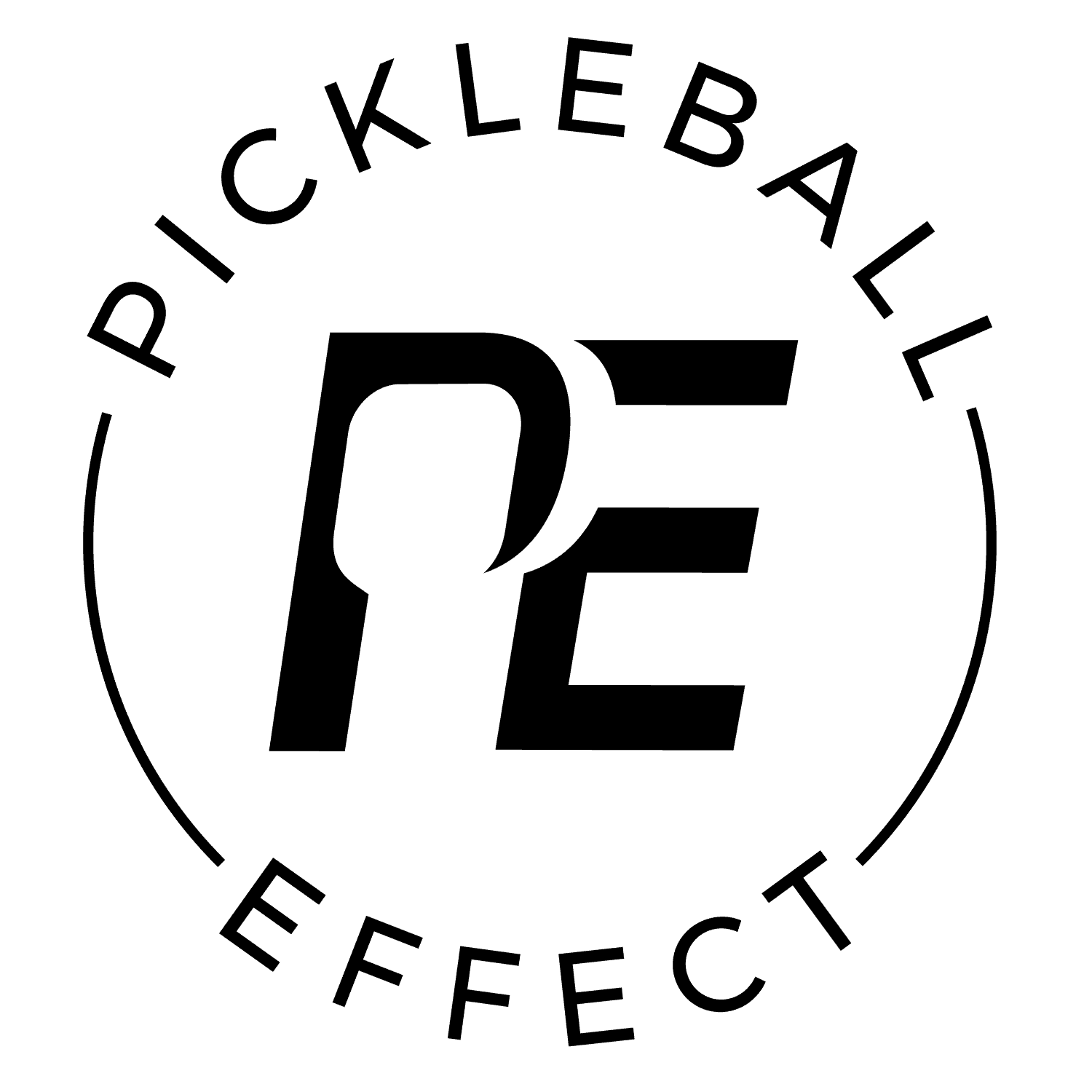Paddle technology has significantly advanced in recent years, offering a wider variety of paddle types with increased spin, forgiveness, and power. However, one thing that hasn’t improved is paddle durability, specifically paddle grit durability. No matter which way you slice and dice it, the raw textured or paint grit on your paddle starts to smooth out and lose spin production after only a couple of months of regular play and gets completely smoothed in less than six months. And that’s being generous, if you play multiple times a week and hit hard, then the grit will smooth out even quicker. If you don’t believe me, feel the center and edges of your current paddle to compare the grit levels and you’ll notice the wear in the sweet spot of your paddle.
While all these technology advancements over the years have been great, it also moves paddle prices higher and it sucks to pay $150-$300 on a paddle that will only keep its peak spin performance for a short period. That’s why I was so excited to learn about what Reload is doing to solve this problem of spin loss. We haven’t seen anyone solve this problem as well as Reload has and I’m excited about the technology they are bringing to the game.
To solve this spin loss problem they created replaceable face sheets that you can peel off and stick to your paddle whenever you want to replace the grit on your paddle instead of having to replace your entire paddle for fresh grit. Their replaceable face sheets, or “Reloads” as they call them, look, feel, and behave like raw surface textured paddles which are known for getting the best spin. It’s really cool what they’ve made and I think it will change the market, or at least I hope it does. As a consumer, I want the peak performance of my paddle to last longer than they do right now and this seems like a very viable solution for that.
Going into this review, I had four primary questions I wanted to answer to determine if these replaceable sheets were going to be as cool as I hoped they would be. Here were my questions.
- Do the face sheets spin the ball as well as other raw textured surfaced paddles?
- Are the face sheets durable? Meaning, will they peel off during play or bubble up in the hot sun?
- Is the paddle they are selling with the face sheets any good?
- What’s the warranty look like? If you can keep replacing the facing layer, then you can keep the base paddle for a long time, but what if the base paddle breaks?
After playing, drilling, and testing the paddle for over two weeks, here are the answers to my questions.
Table of Contents
How does the Reload system work?
Reload is the name of the brand and the name of the replaceable skins or sheets they use. They offer one paddle for now, called the RLD-1. When you buy the RLD-1 it comes as a complete paddle, which includes the paddle base and the grit sheets already applied, plus an extra set of Reload sheets. Buying the paddle costs $200 or $180 with my code 10EFFECT.
Once you have the paddle base, you can purchase more Reload sheets in one or three packs. Whenever the Reload sheets on your paddle start to smooth out, which I estimate would take 2-5 months depending on how often and hard you hit the ball, then you peel the sheets off the paddle and put a fresh set of sheets on. Boom, fresh grit. Reloads cost $50 per for a one pack or $130 for a pack of three. My discount code 10EFFECT will also work on the Reload sheets. While the Reloads seem expensive at first, it’s actually a pretty good deal when you put it into perspective of how much it costs to buy a new paddle for fresh grit. I break down how I see the pricing below and why I think it’s much cheaper this way.
I like that the sheets are built into the paddle system and are not sheets you add on top of a paddle that already has grit. This way you get the same paddle every time you switch out the face sheets and putting on the face sheets doesn’t add any unnecessary weight to the paddle. It’s a good design that makes a lot of sense to me.
(Get 10% off with the discount code 10EFFECT directly on their website)
Do the face sheets spin the ball as well as other raw textured surfaced paddles?
To answer this question I ran a spin test. I’ve run spin tests on over a hundred paddles and I publish my results in my paddle database. To calculate the spin potential of a paddle I do ten serves trying to add as much spin as I can and then measure the Revolutions Per Minute or RPMs for each one using a Stalker Pro 3s radar gun. The Stalker Pro 3s is an awesome tool that allows me to take multiple accurate measurements and then average them out to give me the average RPMs for any given paddle. The Reload paddle had an average RPM of 1975. Any paddle above 1950 I consider a good spin paddle.
The majority of modern paddles I’ve tested are getting measurements above 1950 with the best spin paddles averaging around 2000 RPMs and the not as good ones are getting high 1800s. So, does the paddle produce spin as well as other raw textured paddles? Yes, we can check that one off.
Are the face sheets durable?
The skins are essentially stickers and so I was curious if the adhesive would work well after being stressed. To apply the skin you simply remove the one that is on there and underneath is a flat surface without any texture and then you apply a new sticker or face sheet. It’s a really simple process and is easy to do.
For this review I played and drilled with the paddle for two weeks in both outdoor and indoor locations. In total, I put in six sessions and 12 hours of play on the paddle. I realize you’ll put more time on it than that but it isn’t insignificant either and I didn’t experience any issues during that time. There was no bubbling or lifting around the edges. Additionally, I set the paddle outside in the hot summer heat for over two hours and didn’t have any issues with it there either. It didn’t bubble and when I pulled back the sticker there was no residue or anything.
So, from my limited testing I didn’t experience any issues here. Now that these are in the market, if there are issues that come up with players putting more time on them then we’ll hear about it real quick. But, for now, it doesn’t seem to be a problem.
Is the paddle any good?
RLD-1
- Static Weight: 7.9 oz avg
- Swingweight: 122 (high)
- Twistweight: 6.37 (moderate)
- Spin RPMs: 1973 (high)
- Length x Width: 16.5″ x 7.5″ (elongated)
- Face: Replaceable raw carbon fiber
- Grip Circumference: 4.25″
- Handle Length: 5.5″
- Core: 16mm Polypropylene Honeycomb
- Special Features: Thermoformed, perimeter foam
- Paddle Type: All-Court
- Price: $199.99 ($180 with code 10EFFECT)
(Get 10% off with the discount code 10EFFECT directly on their website)
Reload only offers one paddle for now, which is the RLD-1. The paddle is thermoformed, has perimeter foam, is elongated with an extended 5.5” handle and is 16mm thick. Then it has a swingweight measurement of 122 and a twistweight of 6.37. So it’s on the heavy side but not uncommon for elongated paddles. Then the twistweight and sweet spot size is pretty good for an elongated paddle.
With the popularity of Slyce Speed Caps and adding weight to the handle recently we’re learning that you can make higher swingweight paddles like this feel lighter at the net with some weight in the handle which makes higher swingweight paddles more attractive than they used to for players who don’t like heavier paddles.
The paddle plays well and can be best described as a toned down or softer thermoformed paddle. Similar paddles would be the JOOLA Perseus Gen 2, Ronbus R1 Pulsar FX, or a Bread N Butter Shogun. It’s an all-court style that leans towards the control side and has a softer feel than most thermoformed paddles. The paddle doesn’t suck and shouldn’t hold you back from purchasing the paddle if that’s the style of paddle you like. The big drawback to this is that this is the only shape and thickness option available so it limits the number of people who would like to use the Reload technology if this isn’t the type of paddle they like. I wish they had more paddle options to choose from and I imagine that will come with time.
What’s the warranty look like?
The paddle warranty is especially important since you can replace your grit which will extend the life of your paddle, but what if your paddle delaminates or core crushes? Reload has a standard six month limited warranty on manufacturing defects but then they say they will replace core crushed paddles for the lifetime of the paddle. This is a big deal and I think it was smart of them to do. Essentially, you can buy one paddle and as long as you take care of it, it will last you a long time since they will replace core crushed paddles no matter when it happens and you just have to keep replacing the sheets. It plays into their business model to keep players coming back to get more sheets so they want to keep you happy with the paddle and I’m glad they do. If I go with Reload, it’s because I want to keep the paddle for a long time.
Read full warranty language here >>
Breaking down the pricing
Let’s discuss pricing for a moment. By using my code 10EFFECT, you can purchase the paddle for $180. Additionally, if you replace the grit every three months and buy a bundle of three reloads at bulk pricing with my discount code, the total cost is $118 for the pack, or approximately $40 per Reload. This brings the overall cost to about $300, providing you with four new paddles for the entire year. In comparison, purchasing four popular Six Zero Double Black Diamond paddles, even with discounts, would cost $648. Even for those who only buy two paddles a year, the cost would be $324. You can see the value there, right? For the price of two paddles, you effectively receive four paddles and the opportunity to enjoy fresh grit more frequently. This analysis is based on a mid-price point paddle, and similar assessments can be made for paddles at different price points.
My Recommendation
The answers to my questions about Reload checked out. It seems like a no brainer to me with the caveat that you have to like the paddle they offer. Because they only offer one paddle option it limits the number of people who would pick one up. I imagine they will keep adding more options as time goes on so I would keep on eye on them if their current paddle isn’t your style.
It’s also fun to think about the possibilities this technology could lead to. Reload could make quiet skins, power skins, or different weighted skins. Lots of ways they could take this so it’ll be fun to follow along.
I’m really impressed with what they did and how the replaceable sheets perform. I think this technology solves a real problem and could very well be the future of paddles. I hope this technology gets adopted or adapted by every brand someday. As a consumer, I want the peak performance of my paddle to last longer and this is viable solution for that. I think it’s a big win for paddle performance and consumers in general.
(Get 10% off with the discount code 10EFFECT directly on their website.
Braydon competes at the 5.0 level and plays in 5-10 tournaments a year. He plays/drills 3 to 4 times a week and would play more if time allowed it.

Paddle Terms Glossary
We’ve categorized paddles into three categories. Control, All-Court, and Power. Paddle categories are determined by Braydon after he hits or reviews the paddle.
- Control paddles offer a softer feel and better absorbs pace off the ball but doesn’t give you as much power.
- All-Court paddles give you a blend of power and control and does well at everything though it doesn’t excel at anything.
- Power paddles often have a firmer feel and will return more power but are harder to control.
A paddle’s weight represents the inherent mass of the paddle as measured on a scale. However, relying solely on this static weight measurement can be misleading when assessing the true perceived heaviness of the paddle. Even if two paddles both clock in at 8 oz, their actual heft in your hand can markedly differ due to variations in weight distribution within the paddle. This is why the static weight should be considered with the swingweight of the paddle. See the definition of swingweight below.
The weight value listed in the database corresponds to the paddle’s weight that I used to gather the swingweight and twistweight measurement. It’s possible that if your paddle has a different static weight than then the swingweight and twistweight may be slightly different.
There are three primary shapes a paddle can have which consists of the length and width of the paddle. These three shapes are:
- Elongated: The dimensions for an elongated paddle are 16.5″ x 7.5″.
- Standard: A standard shaped paddle has dimensions of 16″ x 8″.
- Hybrid: A hybrid shaped paddle falls somewhere in between the standard and elongated shapes, with approximate dimensions of 16.25″ x 7.5″-7.7″.
Then there are two less common shapes you’ll see. These are:
- Extra-Elongated: This shape is 17″ x 7″
- Widebody: This any paddle shorter than 16″ long.
When considering the advantages and trade-offs of paddle shapes, it’s important to understand the characteristics of each shape.
- Elongated Paddle: An elongated paddle offers increased reach, spin, and power. However, this additional reach comes at the expense of forgiveness, particularly from side-to-side.
- Standard Paddle: In contrast, a standard-shaped paddle provides less reach and a little less power & spin but offers greater overall forgiveness. This means that while you may not have the same extended reach as an elongated paddle, you gain better control and stability.
- Hybrid Paddle: The hybrid shape serves as a middle ground between the elongated and standard shapes. It provides a balance between reach and forgiveness, offering players a versatile option that combines aspects of both shapes.
It’s interesting to note that advanced players often prefer elongated shapes. On the other hand, players at lower skill levels typically opt for the extra forgiveness offered by standard shaped paddles.
Ultimately, the choice of paddle shape depends on an individual’s playing style, preferences, and skill level. Whether your focus is on reach or forgiveness, understanding the unique benefits and trade-offs of each shape can assist you in selecting the paddle that best suits your game.
Swingweight is a measure of the paddle’s resistance to swinging about the end of the handle. The higher the swingweight number the heavier it will feel in your hands. A higher swingweight has more power but is harder to swing, lower swingweight is easier to swing but has less power. Sometimes a faster swing with a lower swingweight can make up for power lost in swingweight. The price paid for that is greater impact shock. Stock swingweights will vary between 100 – 140.
Twistweight is the resistance to rotating around the long axis through the middle of the paddle from butt to tip. The higher the twistweight the more resistance the paddle has to rotating on off center hits. This measurement is closely related to the amount of forgiveness or the size of the sweet spot of the paddle. A higher twistweight indicates a bigger sweet spot. Twistweight numbers range from 5 – 8.
Measuring the revolutions per minute (RPMs) off of a serve you get a number that shows the spin potential of a paddle. Using these RPM measurements I’ve created five buckets that a paddle will fall into indicating its overall spin potential. The five buckets are:
1900 or Higher = Very High
1700 – 1900 = High
1500 – 1700 = Medium
1300 – 1500 = Low
1300 or less = Very Low
You can tell a big difference in the amount of spin a paddle generates when you compare a Very High paddle to a low paddle. But the gains from Medium to High to Very High are marginal. We’ve found that having at least a medium rating is often enough if you’re looking for a good spin paddle. However, if you’re a big hitter then you will benefit more from a high spin paddle to help you keep the ball in play more often.
The power level of a paddle is shown in miles per hour (MPH) after taking ten measurements with a speed gun of hitting a serve as hard as I can. This measurement gives you an idea of how hard you can hit the ball when given the chance to take a full swing. So shots like serves, drives and overheads. The higher the MPH reading the more power you can generate with the paddle.
I also show the percentile ranking of the measurement to give you an idea of how it stacks up against the rest of the paddles in my database.
The pop level of a paddle is shown in miles per hour (MPH) after taking the average of ten speed gun measurements of hitting a punch volley as hard as I can. This measurement gives you an idea of how hard you can hit the ball on shorter swings and gives you an idea of how quickly a ball comes off the face when you apply less force on the ball. So shots volleys, dinks, counters, and resets are all affected by the pop measurement. The higher the pop measurement the stronger your counters will be but it takes more skill to keep the ball from floating or popping up on you when resetting a hard hit ball or when dinking.
I also show the percentile ranking of the measurement to give you an idea of how it stacks up against the rest of the paddles in my database.
The term “forgiveness” pertains to both the size of the sweet spot and the stability of the paddle. A paddle that is more forgiving offers a larger sweet spot, greater stability, and yields more power when hitting off-center shots. On the other hand, a less forgiving paddle has a smaller sweet spot and does not provide as much power when hitting off-center shots.
While there seems to be only benefits of more forgiving paddles, less forgiving paddles are often more maneuverable and is easier to generate more paddle speed.
